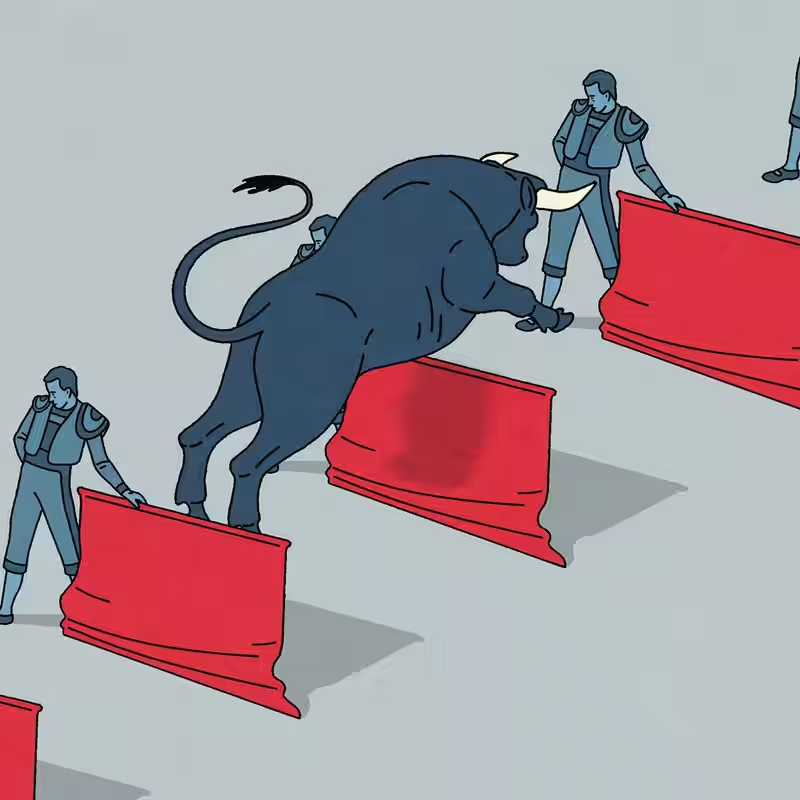Table of Contents
- A Bull Market Born in Crisis
- April’s Brush With Collapse
- AI Boom: The Unexpected Lifeline
- Policy Whiplash: From Biden to Trump-Era Tariffs
- What’s Next for the Bull?
- Sources
A Bull Market Born in Crisis
The current bull market—now in its third year—has done the seemingly impossible: it survived soaring inflation, geopolitical tensions, trade wars, and even the gravitational pull of economic gravity itself.
Launched in late 2022 during President Biden’s administration, this rally began amid the wreckage of the post-pandemic inflation surge and aggressive Federal Reserve rate hikes. Yet instead of fizzling out, it surged forward, powered by tech innovation, resilient consumer spending, and, most critically, the explosive rise of artificial intelligence.
April’s Brush With Collapse
For a moment in April 2025, it looked like the party was over. The S&P 500 tumbled nearly 8% in just three weeks as fears of a hard landing intensified. Inflation showed signs of re-acceleration, Treasury yields spiked above 4.5%, and regional bank stress returned to headlines.
“We were one bad payroll report away from a full-blown correction,” said Marcus Lin, chief strategist at Horizon Capital. “Investors were exhausted. Valuations looked stretched, and sentiment was fragile.”
But then, something unexpected happened.
Bull Market Gets a Second Wind from AI
The artificial intelligence boom—already simmering since 2023—exploded into full force in May 2025. Breakthroughs in generative AI, enterprise adoption, and chip innovation reignited investor enthusiasm, particularly in mega-cap tech stocks.
NVIDIA, Microsoft, and Meta led the charge, with AI-related revenues growing at triple-digit rates year-over-year. Even legacy firms like Oracle and IBM saw their stocks double as they rebranded themselves as “AI infrastructure” plays.
“AI didn’t just boost earnings—it rewrote the growth narrative,” said Priya Mehta, portfolio manager at Veridian Funds. “Suddenly, the bull market wasn’t just about recovery—it was about a new technological frontier.”
By June, the S&P 500 had not only recovered its April losses but hit new all-time highs—a feat many analysts had deemed impossible just months earlier.
Policy Whiplash: From Biden to Trump-Era Tariffs
The bull market also weathered a storm of policy uncertainty. Early gains occurred under Biden’s Inflation Reduction Act and infrastructure spending. But in 2024–2025, renewed trade tensions—particularly a fresh round of tariffs targeting Chinese tech imports—threatened to derail global supply chains.
Ironically, those same tariffs accelerated U.S. investment in domestic AI chip production, benefiting companies like Intel and AMD. “Policy chaos created unintended winners,” noted economist Daniel Ruiz of Brookings.
What’s Next for the Bull?
Despite its resilience, the bull market now faces familiar headwinds: elevated valuations, a potential government shutdown limiting economic data, and year-end balance sheet tightening by banks.
Still, many strategists believe the AI tailwind remains strong. “We’re in the second inning of the AI revolution,” said tech analyst Lena Cho. “This bull isn’t running on hope—it’s running on real revenue.”
Yet caution persists. As one Wall Street veteran put it: “Markets that defy gravity for too long often forget they’re still subject to it.”
Sources
The New York Times: For 3 Years, the Bull Market Defied Inflation, Tariffs and Gravity




